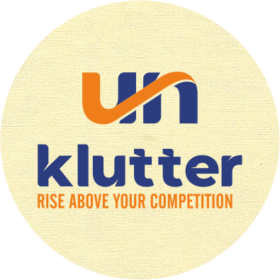Resume-Writing Tips: Not Just Any Piece of Paper
We’ve all been there. Staring at that empty page, fingers hovering over the keyboard, and wondering, “How do I sum up my entire career in a way that actually gets noticed?” Writing a resume feels a bit like packing for a trip—you want to include everything, but somehow keep it under the weight limit.
But here’s the truth: your resume isn’t just another piece of paper. It’s your golden ticket to getting a recruiter’s attention. And in today’s competitive job market, your resume needs to do more than just list what you’ve done—it needs to make you stand out, even if you’re one of hundreds of applicants. Ready to make yours count? Let’s break it down.
Why Your Resume Needs to Shine
Customizing your resume is an art, and it’s essential for capturing recruiter attention. A tailored resume speaks directly to the job you’re applying for by highlighting the skills and experiences that matter most. Think of it as a “spotlight” for your qualifications—it allows you to emphasize relevant projects and specific achievements that match the role.
But how do you achieve that? It starts with understanding what recruiters are actually looking for. They have limited time and will usually scan your resume for essential points, such as relevant work experience, skills, and keywords that align with the job description.
Start with a Powerful Professional Summary
Your resume kicks off with a Professional Summary, which is more than just a bland introduction. It’s your personal elevator pitch, a quick snapshot of who you are as a professional, what you bring to the table, and why you’re a perfect fit for the job. This section should be impactful yet concise—two to three sentences that showcase your career growth, major accomplishments, and strengths.
Remember, the goal is to grab attention and keep the recruiter reading.
Focus on Your Work Experience and Skills Section
This is where the heart of your resume lies—your work experience. Use action verbs for your resume like “led,” “developed,” and “achieved” to breathe life into your achievements. When you highlight achievements, focus on those that are quantifiable. Recruiters love numbers! Think “Increased sales by 30%,” or “Managed a team of 20.”
Equally important is the Skills Section. This part should showcase both your hard and soft skills, particularly those relevant to the job you’re targeting. Make sure to integrate resume keywords from the job description, such as specific tools, technologies, or processes. That’s crucial for making your resume ATS-friendly (Applicant Tracking System)—because the first “reader” of your resume is often a bot.
Choose a Clean Resume Format
A clean resume format speaks volumes about your professionalism. It’s all about structure, clarity, and readability. Avoid unnecessary graphics or elaborate fonts. Stick with well-organized sections—work experience, skills, education and certifications, and volunteer work. The cleaner and more organized it looks, the easier it is for recruiters to navigate.
Resume formatting plays a significant role in this. Stick to one font, use bold for section headings, and maintain consistent spacing. It all comes together to create a concise resume that is not only easy to read but also stands out in a pile of applications.
Don’t Forget Education, Certifications, and Volunteer Work
Alongside your professional achievements, don’t overlook your education and certifications. Whether it’s a degree, a course, or an industry-recognized certification, these elements show your commitment to professional development. Likewise, including volunteer work on your resume can demonstrate values like leadership and community involvement—qualities that recruiters often admire.
Relevant Projects Make a Big Difference
If you’ve worked on any relevant projects, especially those that directly align with the role you’re applying for, make sure to feature them. You want the recruiter to see at a glance that you have hands-on experience that could be valuable to their team.
The Final Step: Proofread Your Resume and Ensure Online Presence
Before you hit send, always proofread your resume. It sounds simple, but errors can be costly. Spelling mistakes or inconsistent formatting can distract from your qualifications and send the wrong message about your attention to detail.
In today’s job market, your professional online presence is just as important as your resume. Link your LinkedIn profileor portfolio to allow recruiters to explore your full career history and accomplishments. It’s a chance to further reinforce the professionalism shown in your resume.
Conclusion: Your Path to Job Search Success
An effective resume is your golden ticket to job search success. By tailoring your resume, using resume examples as inspiration, and ensuring it’s clear, concise, and ATS-friendly, you’re setting yourself up for success. Follow these job application tips, and you’ll craft a standout resume that showcases your skills, achievements, and potential for career growth.




